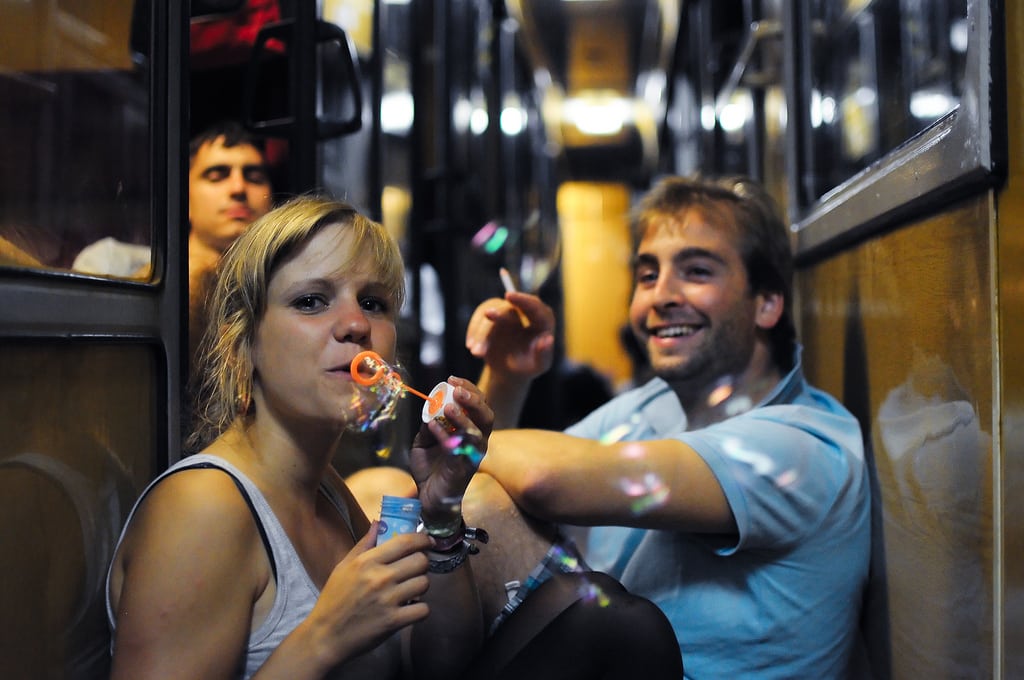Skift Take
A more informed planning process and the desire for last-minute mobile tickets are making the once popular European rail pass a travel relic with less and less relevance to today's young travelers.
A combination of booking technology, mobile devices and changing traveler habits is leading to the disappearance of what was once an iconic product for U.S. travelers: the European rail pass.
In earlier years travelers would head to Europe with their paper Eurail Passes for a month-long jaunt across Europe’s famous sites, cheap hotels, parties, and cultural landmarks.
In a case of the chicken and the egg, the trend both opened up the market for and grew because of European rail passes that gave users an unlimited number of boardings in major European countries for a set period of time.
Rail Europe, still a popular rail booking platform today, first introduced the pass product in 1959. It remained the company’s sole product until 2006 when it offered point-to-point bookings for the first time.
Then, in a quick eight years, the pass went from 100 percent to 25 percent of Rail Europe’s sales. The majority of Rail Europe’s sales today are point-to-point tickets.
Baby boomers are now the primary customers for the rail pass. Millennials are booking closer to departure, often with an eye for mobile tickets and a specific set of cities to explore. They are also using low-cost airlines to travel around the continent for cheap.
It’s this new set of customer behavior that’s causing the slow but steady disappearance of the rail pass.
“When millennials use [the Eurail pass], it’s because their parents or grandparents bought it for them, but know that they want to go to Paris, Barcelona and Berlin. That’s typical millennial behavior,” explains Rail Europe CEO Frederic Langlois.
“A baby boomer will go back to Paris, London and Rome. They may purchase the pass product because they remember the product and want to experience it again.”
Although the majority of Rail Europe’s bookings still happen two to three months before departure, the company has seen a rise in last-minute purchases that include three days to two weeks before departure.
These trend-savvy bookers have also done their research and are interested in moving directly from hub to hub rather than an unspecified plan in a certain region.
The instant success of the new high-speed route between Paris and Barcelona highlights this trend. Rail Europe saw sales of the six-hour trip between Paris and Barcelona increase 86 percent in the past year.
Train operators are also responding this shift in customer behavior by quietly phasing out sleeper service, which was an integral part to traveling by rail pass (for those smarter riders who remembered to book a sleeper in advance).
Another big and perhaps driving difference between the pass and point-to-point tickets is technology.
The latter are available as e-products and can be bought at the last minute on mobile devices or months in advance from home. The rail pass was never adopted as an e-product and as a result must be booked further in advance.
Young travelers have little interest in carrying about a paper pass for four weeks.
The majority, or 72 percent, of Rail Europe bookings today occur online.
In terms of booking channels, Rail Europe has seen a shift from laptops towards tablets; however, smartphones are being used more to check schedules than to actually purchase tickets.
“The writing is on the wall. Consumers are buying more and more point-to-point tickets and less and less passes. They are using digital devices to buy tickets,” Langlois summarizes.
That however, doesn’t mean that the rail pass today is useless.
“It’s still an amazing product that carries a lot of weight, but it was designed for the need of the backpacker of the 70s and the 80s,” says Langlois.
“I don’t foresee it disappearing because the brand awareness is there, but it is declining. At some point, the company will have to find a way to make it an e-product.”
The Daily Newsletter
Our daily coverage of the global travel industry. Written by editors and analysts from across Skift’s brands.
Have a confidential tip for Skift? Get in touch
Tags: rail europe, technology
Photo credit: Backpackers onboard a night train in Eastern Europe. Felix Montino / Flickr
